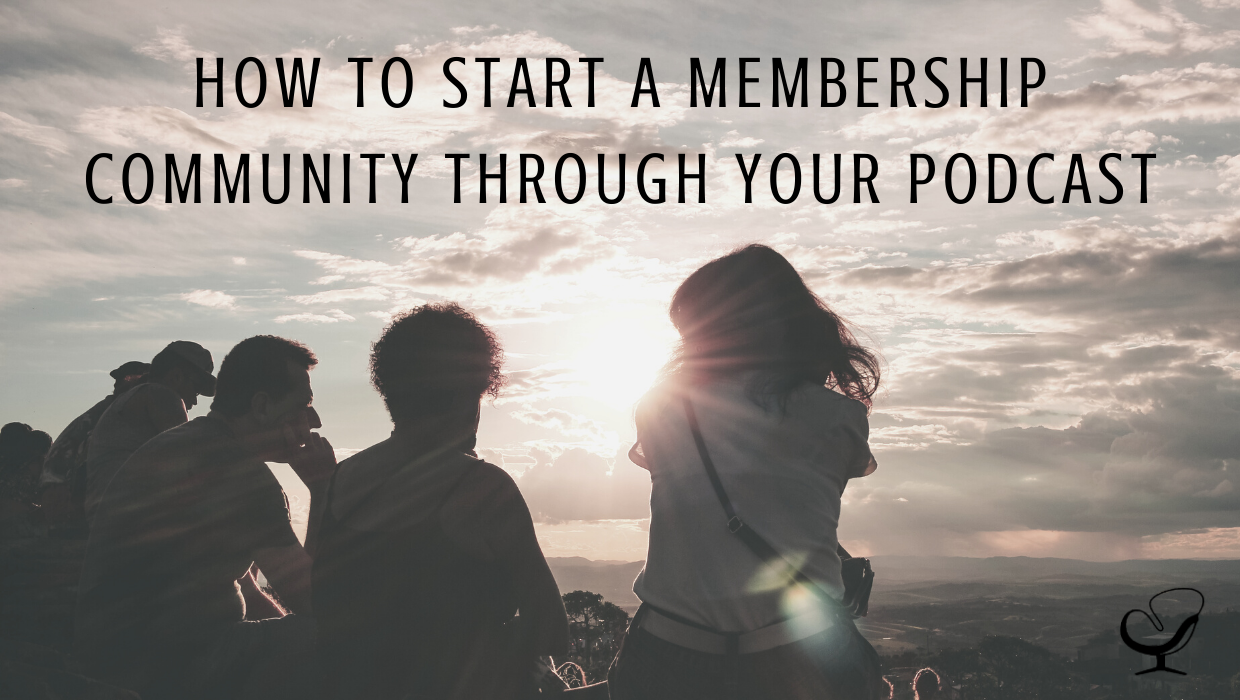A membership community is something most professional podcasters aspire to have. They help you go deeper with a community, provide consistent and predictable income, and they’re a launchpad into your other services. Sure, it’d be great to have 100 people paying $100 per month…but where do you even start?
I started Next Level Practice in January 2019. It is a membership community for counselors, therapists, and coaches who want to take their practice to the next level. It’s aimed at people in the start-up phase of their private practice. If you want to start a membership community you’ll want to have:
- A clear pain you are solving
- A beta test group
- On-going systems to provide value
Things to Consider Before Your Start A Membership Community Through Your Podcast
Identify Your Audience’s Pains They Want Solved
Before you get started, make sure your audience has told you what pains they want solved. In previous articles, I discuss the formula for asking about the pain, product, and price so your audience tells you what they want to buy. Don’t say, “I want a community for [fill in population here].” Instead say, “This community will help [population] to overcome [pain] and experience [feeling or outcome of community].” If you are clear about the purpose of the group, it will make it much easier for members to opt in or opt out. For Next Level Practice, we say, “We help you from the moment you think about starting a practice until you hit $100k.” This is a clear line where people can say, “Yup, that’s me!”
Create an Interest List
Once you have identified the pain and focus, create an interest list. This will help you see how many people want to join your community. Typically, you’ll get 10-20% of the interest list to join the first cohort. So run the numbers on what it will take for it to be worth it to you.
For example, maybe you want to gross an extra $1,000 per month during the first phase. Your final price may be $100/month but for the beta test group you’re charging $55/month. That means you need 19 people to make that goal. So if only 10% of an interest list opts in, you need at least 190 people on your interest list.
You Need Systems In Place Before You Start a Membership Community
Lastly, you have to have systems. I thought it would be good to have some outside perspective on this, so I asked Pat Flynn from Smart Passive Income about his tips on membership communities, he broke it down into five tips:
-
- Realize that it is not push-button easy: Pat said, “It’s important to consider the journey that this person is going to have in there. Is it for support purposes? Or is it for networking purposes? Perhaps it’s for content purposes? We need to know exactly what we want to create before putting rubber to the road and creating things. But once you nail that, it becomes a lot easier for this thing to finally materialize.”
- Choose the right platform: Pat says, “I’m a big fan of circle.so. I think there’s a lot of other great platforms out there like Mighty Networks and of course, you could use things like Facebook groups and what not to bring communities and memberships together.”
- Get team members involved: Pat recommended, “When a team can be involved in the community and step up and be a part of the conversation and help people along, that can go a very long way, too. That way, community is just a part of it from the top down. And when you get people stepping up and actually having conversations with people and engaging with the community there, it always just begins to help the thriving aspect within the space.”
- Regularly schedule events: Pat said, “Every month we have a COTM, or a challenge of the month, something that members can get a lot of value from once a month and continue to stay on board for and look forward to for the next one. These things have to be achievable and something that can be done within the month, obviously. But once you get the results, that’s a great way to hook people in.”
- Don’t be afraid about churn: “I think reducing churn as much as possible – that means how many people actually leave each month because when they get that bill…And there’s a lot of fun things that you can do to encourage people who have left to come back and come back even stronger. And also realize that when people leave, it’s making the base that is within the community much stronger too.”
As you develop your membership community, realize that people like Pat and I have done this before – reach out and get help. That will help you to identify the pain you’re helping solve, build out a test group, and have on-going systems to add value.


